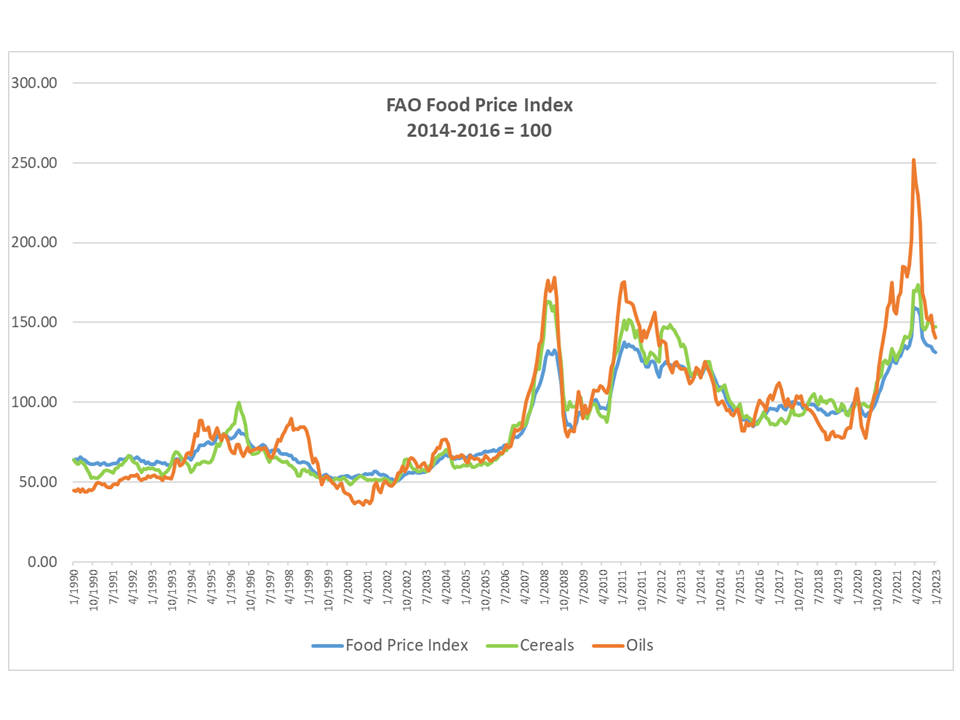Pick Up
711. January 2023 World Food Price Index

The UN Food and Agriculture Organization (FAO) released its latest World Food Price Index on February 3, and the January 2023 value averaged 131.2 points, the 10th consecutive monthly decline and 28.6 points (17.9%) lower than the high reached in March 2022. The January decline reflected the drop in vegetable oil prices, dairy products, and sugar, while grain and meat prices remained stable.
Cereal prices were 147.4 points higher in January, a fraction (0.1%) higher than in December and 6.7 points (4.8%) higher than in January of last year. Among the major cereals, world rice and maize prices rose while barley and wheat prices fell. International rice prices rose 6.2% on a monthly basis, reflecting strong domestic demand and exchange rate movements among Asian exporters. For maize, strong demand for exports from Brazil and concerns about drought in Argentina offset the downward trend in U.S. export prices. Sorghum prices also rose slightly in response to developments in maize prices. International wheat prices fell for the third consecutive month, but this was due to higher-than-expected supplies from Australia and Russia.
The vegetable oil price index fell 4.2 points, or 2.9%, from the previous month to 140.4 points in January, 25% lower than a year ago. This decline reflects low world prices for palm, soybean, sunflower, and rapeseed oil. In the case of palm oil, this was due to a drop in world import demand as major importers replenished inventories over the past several months, and in the case of soy oil, the drop in demand was due to improved production prospects from better weather in Argentina and non-competitive prices compared to other vegetable oils.
Contributor: IIYAMA Miyuki (Information Program)
